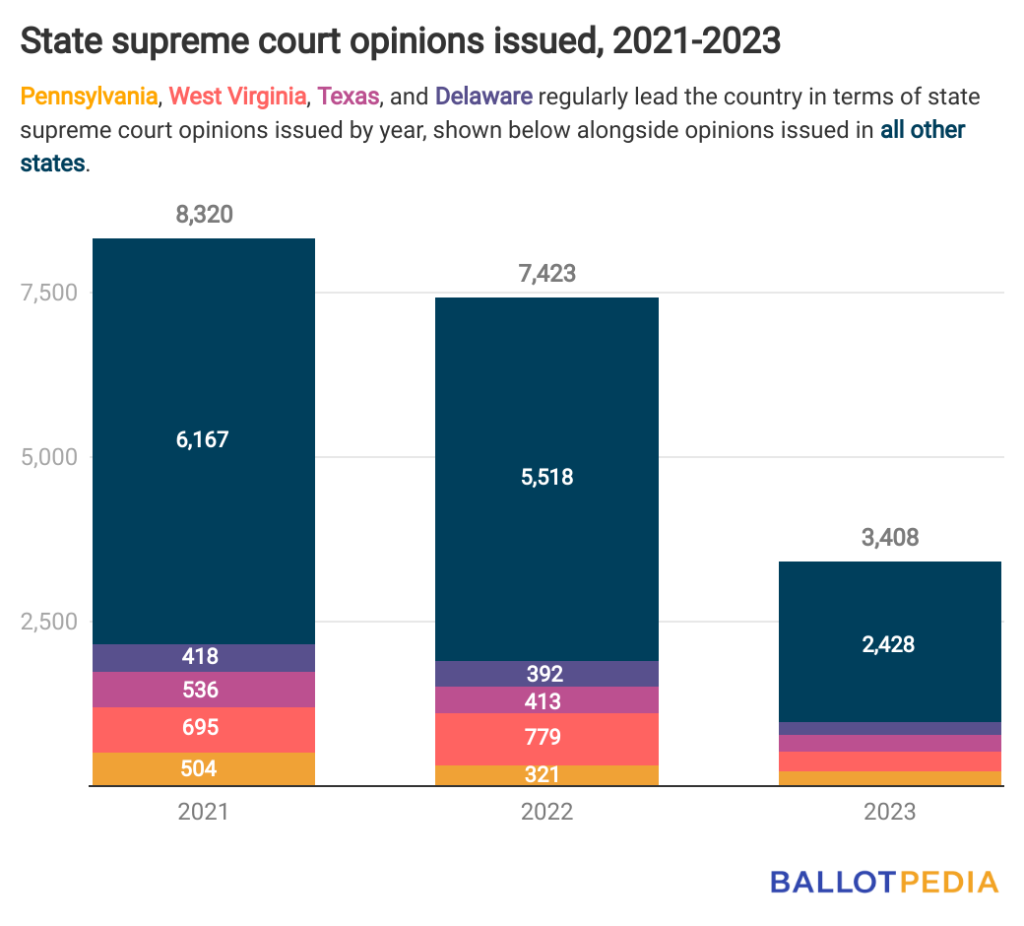State supreme courts issued 392 opinions from June 12-25. The Supreme Court of Appeals of West Virginia led the field with 82 opinions issued, followed by Kentucky with 31 and Texas (supreme court) with 20. The last two weeks’ 392 opinions account for 12% of the year-to-date total of 3,408. West Virginia, again, leads with 310 opinions issued since Jan. 1, followed by Pennsylvania with 219 and Delaware with 197.
State supreme courts have been issuing an average of 136 opinions per week so far this year. This figure is less than the 2022 weekly average of 143. It’s also less than the average of 160 opinions issued per week in 2021.
Supreme courts in 10 states have issued fewer than 25 opinions since the start of the year.

Some of the state supreme court opinions issued this year include those in:
- Arizona, where the court held that Ariz. Rev. Stat. 19-118.01 only prohibits per-signature compensation when people are paid to collect petition signatures;
- Colorado, where the court held, “like any other hearsay statement, a defendant’s self-serving hearsay may be admissible if it satisfies a hearsay-rule exception in the Colorado Rules of Evidence.” The exception was the “excited utterance exception;” and,
- New York, where the court held that music producer Lukasz Gottwald “was a limited-purpose public figure” in a defamation case between Gottwald and singer Kesha Rose Sebert. Since the court determined Gottwald was a public figure, the court held that it would require “proof that the allegedly defamatory statements [against Gottwald] were made with actual malice.”
Supreme courts in Pennsylvania, West Virginia, Texas, and Delaware regularly end the year as some of the country’s most active courts. Collectively, they accounted for 26% of all opinions issued in 2021 and 2022, and, to date, 29% in 2023.

Every state and the District of Columbia have at least one supreme court, known as a court of last resort. Oklahoma and Texas have two courts of last resort, one for civil cases and one for criminal proceedings. Supreme courts do not hear trials of cases. Instead, they hear appeals of decisions made in lower courts. The number of justices on each state supreme court ranges between five and nine.
In 2020, we conducted a study identifying the partisan balance in every state supreme court. You can find that research here. We also identified which justices ruled together most often in our Determiners and Dissenters report found here.
Learn More


!["[T]he First and Fifth Amendments Require ICE to Provide Information About the Whereabouts of a Detained Person"](https://images.inkl.com/s3/publisher/cover/212/reason-cover.png?w=600)



